
Internet, cable TV, and phone provider Cable One (NYSE:CABO) met Wall Street’s revenue expectations in Q2 CY2025, but sales fell by 3.4% year on year to $381.1 million. Its GAAP loss of $77.70 per share was significantly below analysts’ consensus estimates.
Is now the time to buy Cable One? Find out by accessing our full research report, it’s free.
Cable One (CABO) Q2 CY2025 Highlights:
- Revenue: $381.1 million vs analyst estimates of $379.5 million (3.4% year-on-year decline, in line)
- EPS (GAAP): -$77.70 vs analyst estimates of $7.37 (significant miss)
- Adjusted EBITDA: $203.2 million vs analyst estimates of $200 million (53.3% margin, 1.6% beat)
- Operating Margin: -128%, down from 27.9% in the same quarter last year
- Free Cash Flow Margin: 20.1%, down from 21.3% in the same quarter last year
- Residential Data Subscribers: 932,000, down 130,800 year on year
- Market Capitalization: $720.2 million
Company Overview
Founded in 1986, Cable One (NYSE:CABO) provides high-speed internet, cable television, and telephone services, primarily in smaller markets across the United States.
Revenue Growth
A company’s long-term sales performance can indicate its overall quality. Even a bad business can shine for one or two quarters, but a top-tier one grows for years. Regrettably, Cable One’s sales grew at a sluggish 4.2% compounded annual growth rate over the last five years. This fell short of our benchmark for the consumer discretionary sector and is a tough starting point for our analysis.
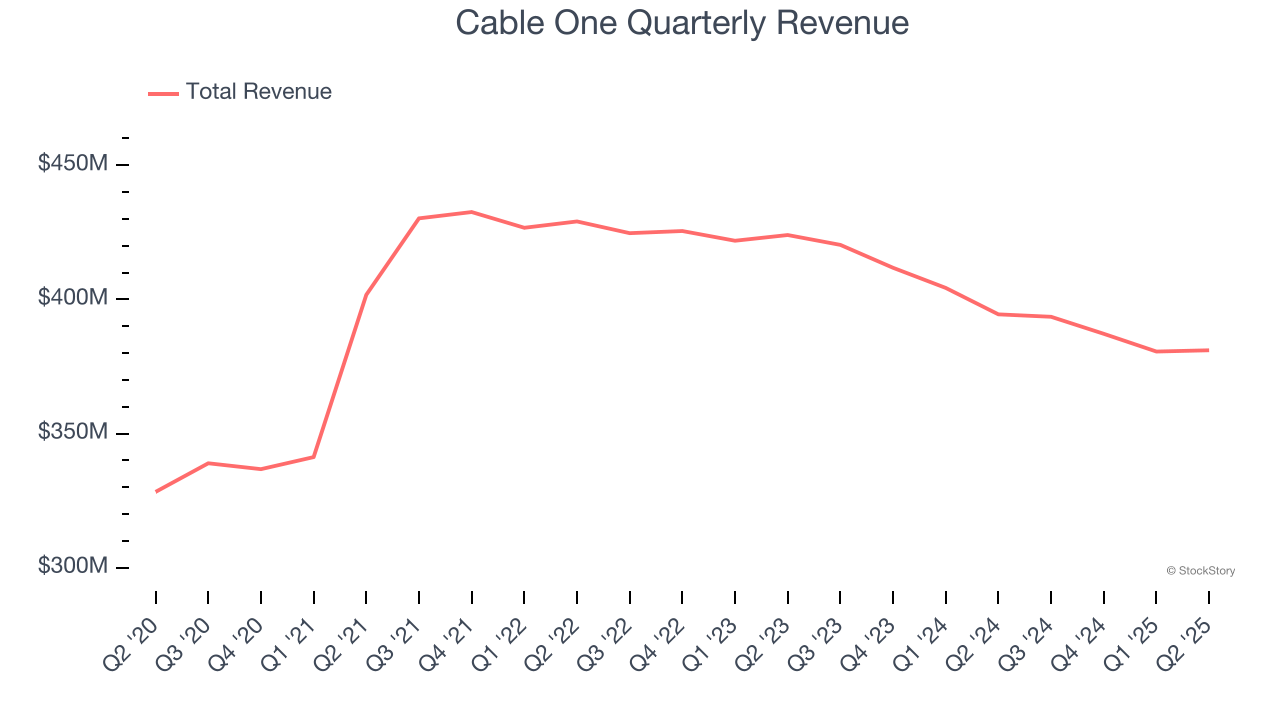
Long-term growth is the most important, but within consumer discretionary, product cycles are short and revenue can be hit-driven due to rapidly changing trends and consumer preferences. Cable One’s performance shows it grew in the past but relinquished its gains over the last two years, as its revenue fell by 4.6% annually. 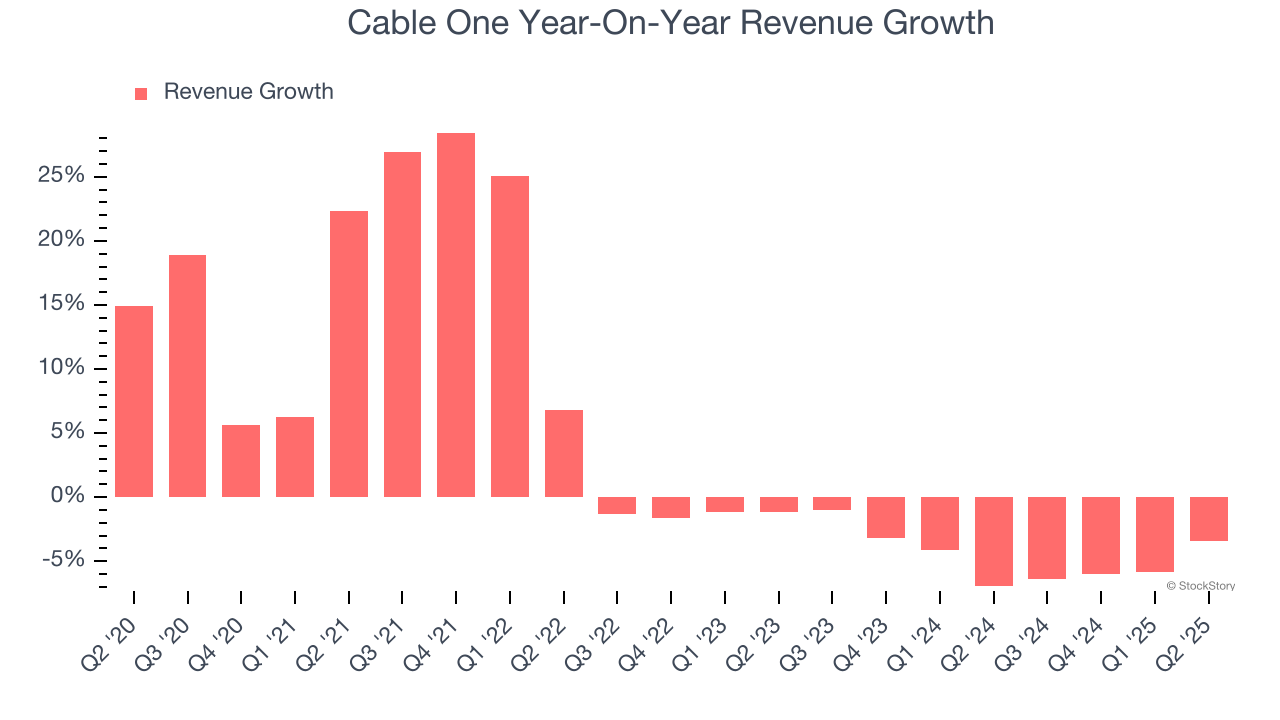
We can dig further into the company’s revenue dynamics by analyzing its number of residential data subscribers and residential video subscribers, which clocked in at 932,000 and 96,200 in the latest quarter. Over the last two years, Cable One’s residential data subscribers averaged 1.8% year-on-year declines while its residential video subscribers averaged 21.4% year-on-year declines. 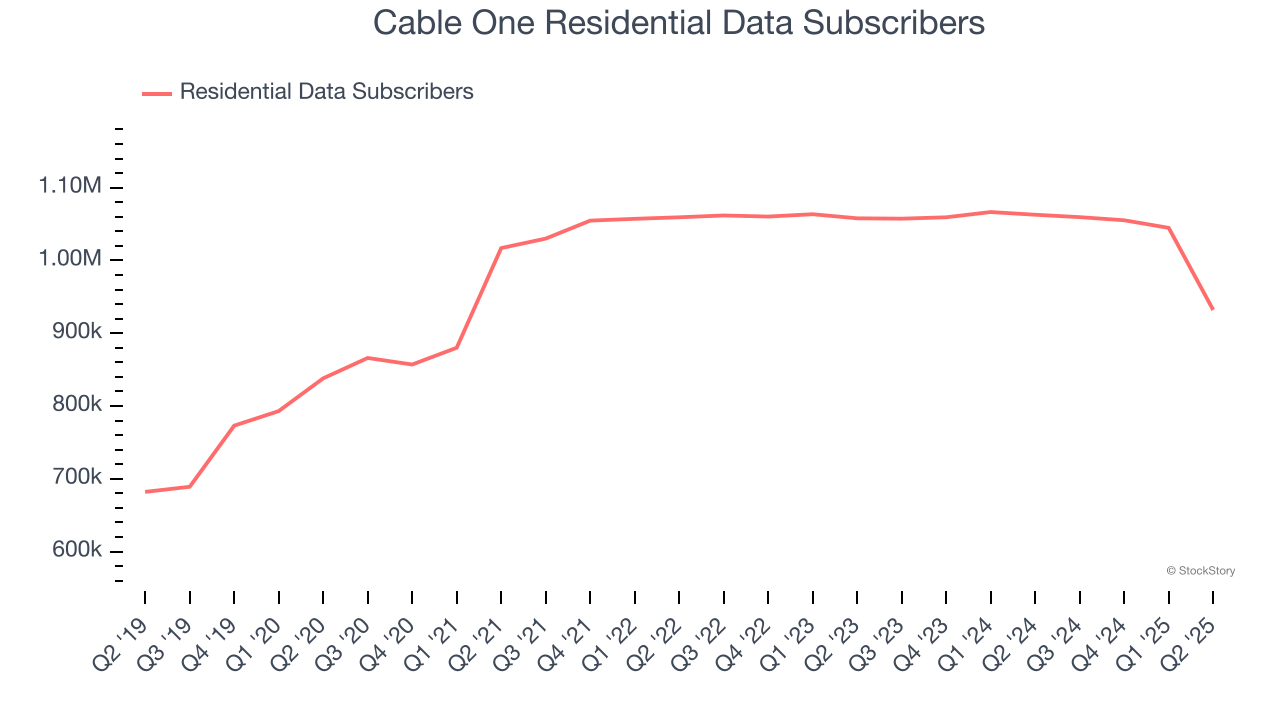
This quarter, Cable One reported a rather uninspiring 3.4% year-on-year revenue decline to $381.1 million of revenue, in line with Wall Street’s estimates.
Looking ahead, sell-side analysts expect revenue to decline by 2.5% over the next 12 months. While this projection is better than its two-year trend, it’s tough to feel optimistic about a company facing demand difficulties.
Today’s young investors won’t have read the timeless lessons in Gorilla Game: Picking Winners In High Technology because it was written more than 20 years ago when Microsoft and Apple were first establishing their supremacy. But if we apply the same principles, then enterprise software stocks leveraging their own generative AI capabilities may well be the Gorillas of the future. So, in that spirit, we are excited to present our Special Free Report on a profitable, fast-growing enterprise software stock that is already riding the automation wave and looking to catch the generative AI next.
Operating Margin
Cable One’s operating margin has been trending down over the last 12 months and averaged 9.7% over the last two years. The company’s profitability was mediocre for a consumer discretionary business and shows it couldn’t pass its higher operating expenses onto its customers.
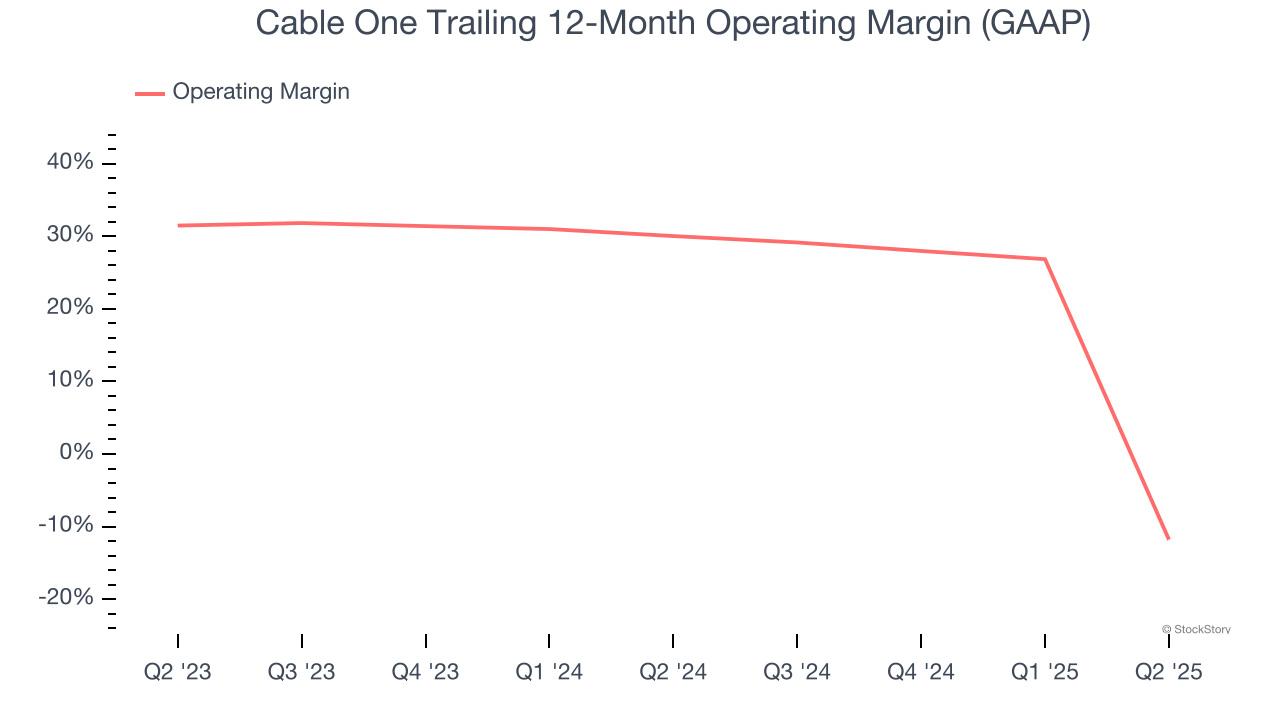
This quarter, Cable One generated an operating margin profit margin of negative 128%, down 156.3 percentage points year on year. This contraction shows it was less efficient because its expenses increased relative to its revenue.
Earnings Per Share
Revenue trends explain a company’s historical growth, but the long-term change in earnings per share (EPS) points to the profitability of that growth – for example, a company could inflate its sales through excessive spending on advertising and promotions.
Sadly for Cable One, its EPS declined by 33.1% annually over the last five years while its revenue grew by 4.2%. This tells us the company became less profitable on a per-share basis as it expanded due to non-fundamental factors such as interest expenses and taxes.
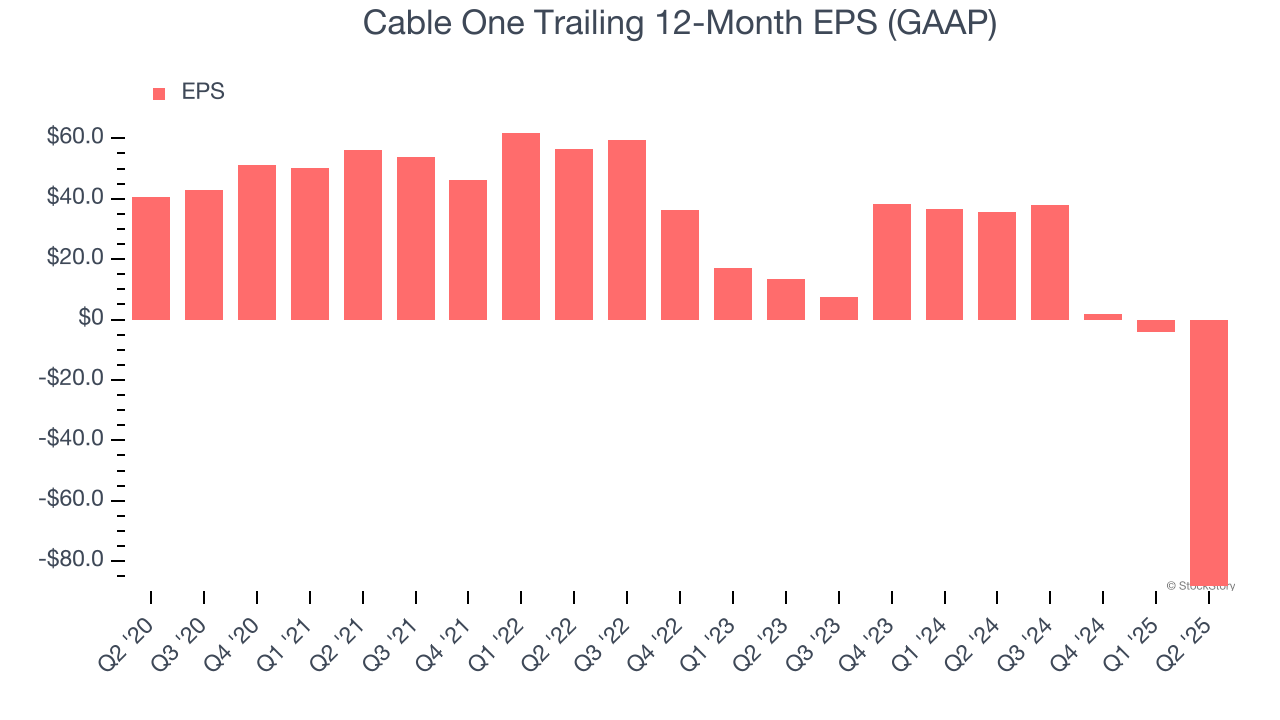
In Q2, Cable One reported EPS at negative $77.70, down from $6.58 in the same quarter last year. This print missed analysts’ estimates. Over the next 12 months, Wall Street is optimistic. Analysts forecast Cable One’s full-year EPS of negative $88.37 will flip to positive $34.78.
Key Takeaways from Cable One’s Q2 Results
We struggled to find many positives in these results as its number of residential data subscribers and EPS fell short of Wall Street’s estimates. Overall, this was a weaker quarter. The stock remained flat at $127.98 immediately after reporting.
Should you buy the stock or not? When making that decision, it’s important to consider its valuation, business qualities, as well as what has happened in the latest quarter. We cover that in our actionable full research report which you can read here, it’s free.
